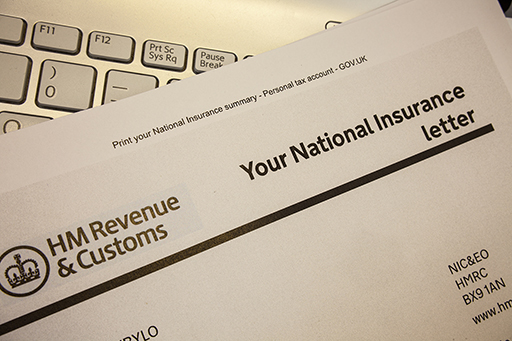3 National Insurance Contributions (NICs)
The second important deduction from your gross income is National Insurance Contributions (NICs). National Insurance is paid by both you as an employee and by your employer(s).
Historically, National Insurance formed the basis for paying social security benefits related to unemployment, illness and retirement. It was first introduced in 1911 and gradually expanded, especially in the 1940s with the launch of the National Health Service and the expansion to state benefit schemes.
NICs from employers and employees make up the second largest single contribution to UK government receipts – close to a quarter of the total. Recent decades have seen this proportion rise as governments have preferred to use NICs rather than income tax to raise additional revenue – perhaps because NICs are not perceived as being a tax!
The way NI works is that HMRC issues each person in the UK with a National Insurance account number when they turn 16. Your contributions to NI each year are recorded under this number.
Your level of contributions and the number of years you’ve been paying NI influences entitlement to, and in some cases the level of, certain benefits. The state pension is a good case in point as it now requires you to have 35 years of NICs to get the full amount of state pension.
As with income tax, the rules and regulations surrounding National Insurance change regularly. In 2019/20 there was a lower income threshold of £8,632 per year and an upper earnings limit of £50,000. On income between these limits, employees’ National Insurance was generally levied at 12%. If you earned more than £50,000, you paid NICs at 2% above that.
These rates and bands were retained for 2020/21 except for the lower income threshold which was raised to £9,500.
| Rate | 2019/20 | 2020/21 |
|---|---|---|
| 0% | £0–£8,632 | £0–£9,500 |
| 12% | £8,632–£50,000 | £9,500–£50,000 |
| 2% | £50,000+ | £50,000+ |
If you are self-employed you pay different NICs. Here the NICs paid are based on the annual profits made. In 2019/20 ‘Class 4’ NICs were levied at a rate of 9% on profits between £8,632 and £50,000. Above £50,000 the rate was 2%. Also, those earning profits of more than £6,365 paid ‘Class 2’ NICs at a rate of £3 per week.
The rates for Class 4 contributions remained the same for 2020/21 but with the threshold for payments rising to £9,500. Class 2 contributions were raised to £3.05 per week on profits above £6,475.
Next, have a go at using what you’ve learned about income tax and NICs by trying some calculations.

